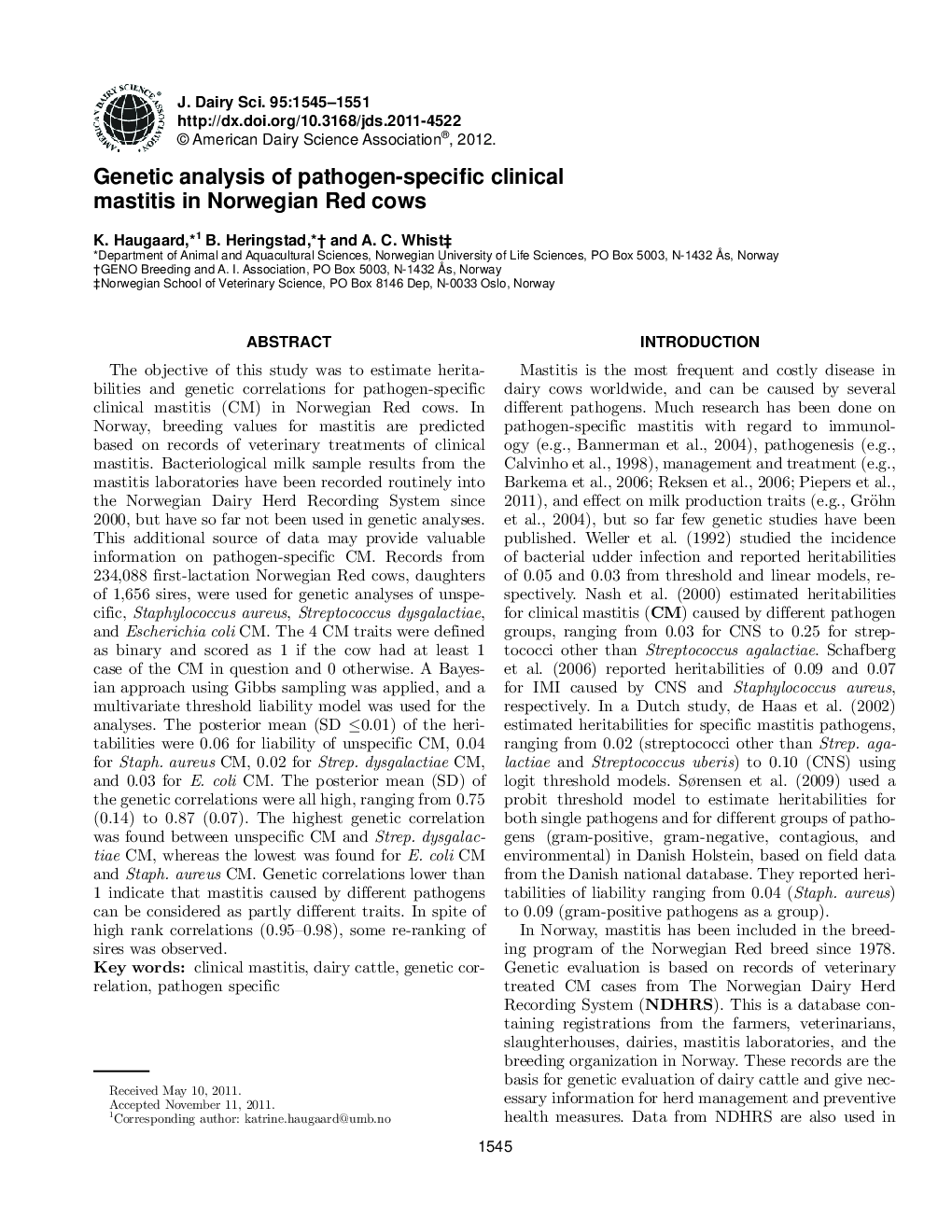| Article ID | Journal | Published Year | Pages | File Type |
|---|---|---|---|---|
| 10976599 | Journal of Dairy Science | 2012 | 7 Pages |
Abstract
The objective of this study was to estimate heritabilities and genetic correlations for pathogen-specific clinical mastitis (CM) in Norwegian Red cows. In Norway, breeding values for mastitis are predicted based on records of veterinary treatments of clinical mastitis. Bacteriological milk sample results from the mastitis laboratories have been recorded routinely into the Norwegian Dairy Herd Recording System since 2000, but have so far not been used in genetic analyses. This additional source of data may provide valuable information on pathogen-specific CM. Records from 234,088 first-lactation Norwegian Red cows, daughters of 1,656 sires, were used for genetic analyses of unspecific, Staphylococcus aureus, Streptococcus dysgalactiae, and Escherichia coli CM. The 4 CM traits were defined as binary and scored as 1 if the cow had at least 1 case of the CM in question and 0 otherwise. A Bayesian approach using Gibbs sampling was applied, and a multivariate threshold liability model was used for the analyses. The posterior mean (SD â¤0.01) of the heritabilities were 0.06 for liability of unspecific CM, 0.04 for Staph. aureus CM, 0.02 for Strep. dysgalactiae CM, and 0.03 for E. coli CM. The posterior mean (SD) of the genetic correlations were all high, ranging from 0.75 (0.14) to 0.87 (0.07). The highest genetic correlation was found between unspecific CM and Strep. dysgalactiae CM, whereas the lowest was found for E. coli CM and Staph. aureus CM. Genetic correlations lower than 1 indicate that mastitis caused by different pathogens can be considered as partly different traits. In spite of high rank correlations (0.95-0.98), some re-ranking of sires was observed.
Related Topics
Life Sciences
Agricultural and Biological Sciences
Animal Science and Zoology
Authors
K. Haugaard, B. Heringstad, A.C. Whist,
